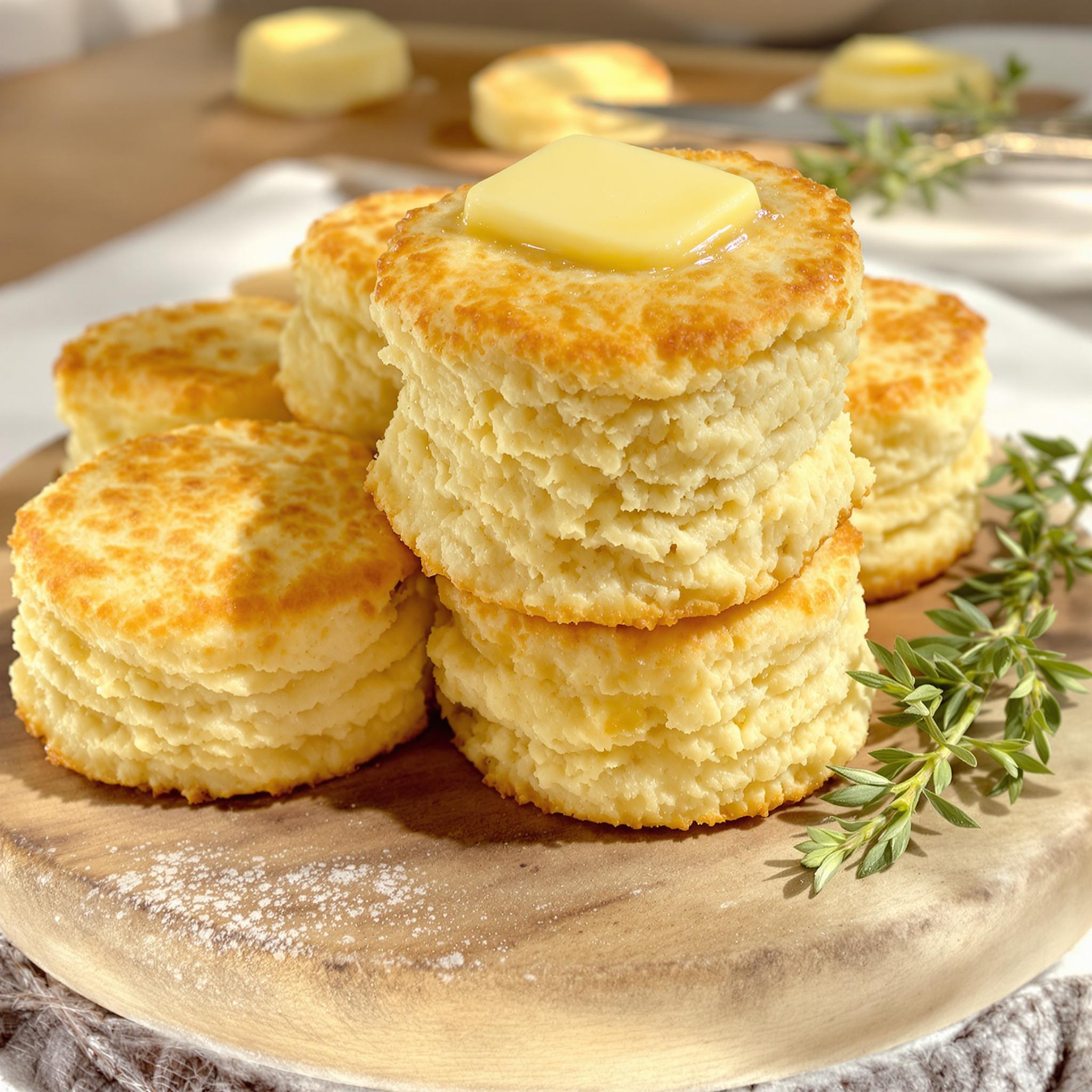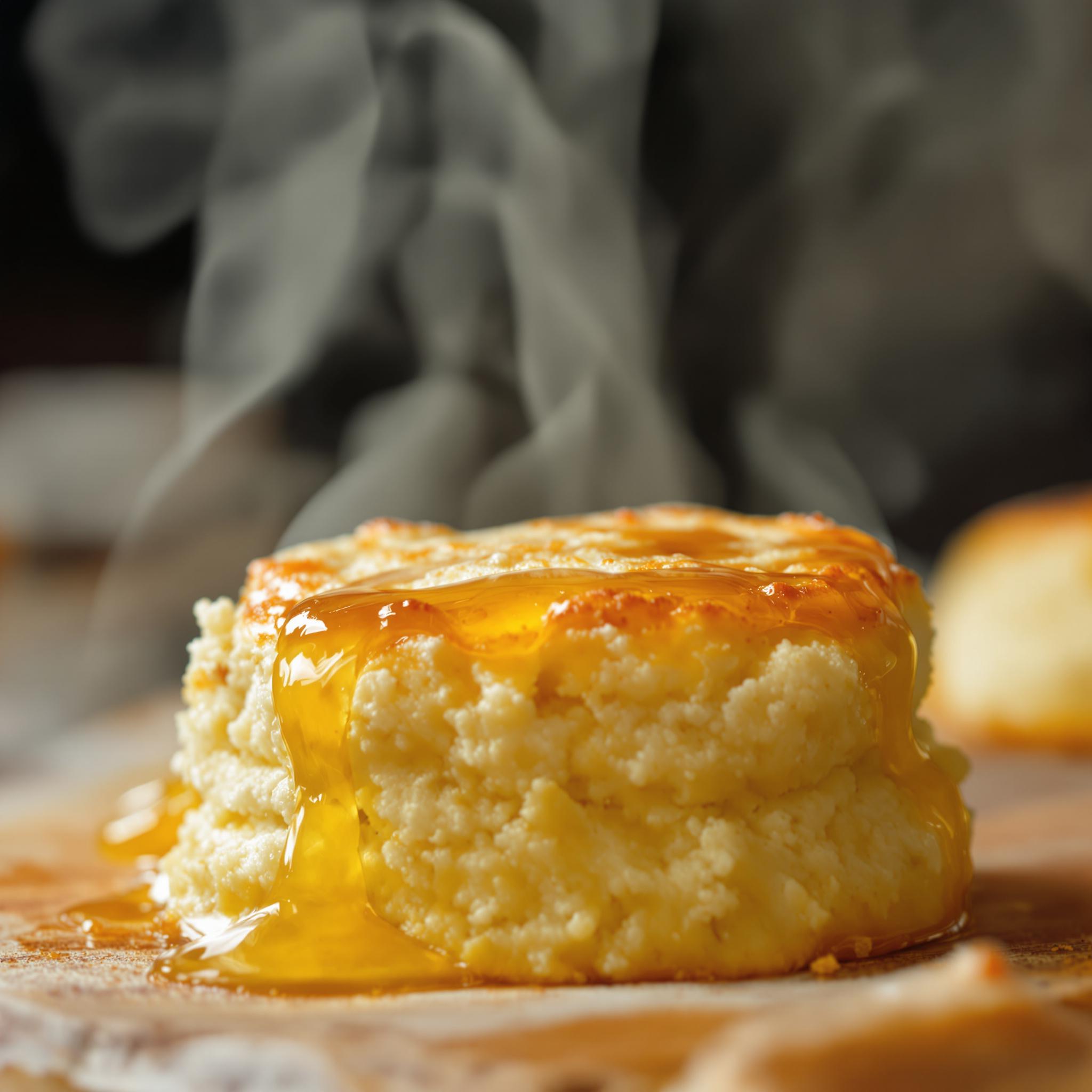
Buttermilk Biscuits: A Taste of Warmth and Comfort
Few things beat the smell of buttermilk biscuits fresh out of the oven. They’re buttery, flaky, and pure comfort food. I made these for a family brunch once, and they disappeared fast. Everyone loved how soft and flavorful they were. Whether you’re new to baking or a pro, this recipe is simple and satisfying.
The History of Buttermilk Biscuits
Buttermilk biscuits have always been big in Southern cooking. Farmers and homemakers liked them because they were quick and easy to make. Over time, recipes changed, but the basics stayed the same—simple ingredients, big taste. Now, they’re enjoyed everywhere, from breakfast to fancy dinners.
Why You’ll Love This Recipe
This recipe is easy and works for any meal. The dough comes together fast, and the biscuits are soft, fluffy, and full of flavor. Golden on the outside, melt-in-your-mouth on the inside. Plus, you can tweak them however you like.
Perfect Occasions to Prepare Buttermilk Biscuits
Serve these biscuits at breakfast with eggs and bacon. They also work as dinner rolls or even dessert with fruit and whipped cream. Bring them to potlucks, serve them during holidays, or enjoy them fresh on a lazy Sunday morning.
Ingredients for Buttermilk Biscuits
- 2 cups all-purpose flour
- 1 tablespoon baking powder
- 1/4 teaspoon baking soda
- 1 teaspoon salt
- 1/2 cup unsalted butter, cold and cubed
- 3/4 cup buttermilk, cold
Substitution Options
No buttermilk? Mix 3/4 cup milk with 1 tablespoon lemon juice or vinegar. Let it sit for 5 minutes. For dairy-free, use plant-based butter and almond or oat milk with a splash of acid. Swap half the flour for whole wheat if you want a nuttier taste.
Step 1: Preheat Your Oven
Preheat your oven to 450°F (232°C). This high heat helps the biscuits rise and get golden. Keep the butter and buttermilk cold—it’s key for flaky layers.
Step 2: Mix Dry Ingredients
In a bowl, whisk the flour, baking powder, baking soda, and salt. Mixing dry ingredients first spreads the leavening evenly. Tip: Sift the flour for lighter biscuits.
Step 3: Cut in the Butter
Add the cold butter to the dry mix. Use a pastry cutter or your fingers to blend until it looks like coarse crumbs. Butter pieces should be pea-sized. This step creates steam pockets that make the biscuits flaky.
Step 4: Add Buttermilk
Pour in the cold buttermilk. Stir gently until just combined. The dough will look shaggy. Don’t overmix—it makes the biscuits tough.
Step 5: Shape and Bake
Turn the dough onto a floured surface. Pat it into a 1-inch thick rectangle. Use a round cutter to shape the biscuits. Place them close for soft sides or spaced for crisp edges. Bake for 12-15 minutes until golden.
Chef’s Tip
Brush the tops with melted butter right after baking. It adds shine and boosts flavor. Trust me, it’s worth it.
Time Required
Prep time: 15 minutes
Cooking time: 12-15 minutes
Total time: About 30 minutes
Nutritional Information
Per serving (1 biscuit): Calories: 180, Protein: 3g, Fat: 9g, Carbs: 22g
Extra Information
Fun fact: Buttermilk used to be the liquid left after churning butter. Today’s buttermilk is cultured, giving it a tangy taste that works great in baking.
Necessary Tools
- Large mixing bowl
- Pastry cutter or fork
- Baking sheet
- Round biscuit cutter
- Rolling pin (optional)
Storage Instructions
Let leftover biscuits cool completely. Store them in an airtight container at room temp for up to two days. For longer storage, freeze them in a zip-top bag for up to three months.
Reheat frozen biscuits in the oven at 350°F (177°C) for 5-10 minutes. Skip the microwave—it makes them soggy.
If stored right, these biscuits keep their flavor and texture. Perfect for quick breakfasts or snacks.
Tips and Tricks
Chill the dough for 15 minutes before cutting. Cold dough bakes better. Don’t twist the cutter when shaping biscuits—it seals the edges and stops rising. Handle the dough lightly for best results.
Serving Suggestions
- Top with honey and butter for a sweet treat.
- Serve with gravy for a classic Southern dish.
Healthier Alternatives
Here are six ways to make this recipe healthier:
- Whole Wheat Flour: Swap half the all-purpose flour with whole wheat for more fiber.
- Reduced Fat Butter: Use low-fat butter without losing much flavor.
- Greek Yogurt: Replace some buttermilk with plain Greek yogurt for protein.
- Oat Topping:
- Herb Infusion:
- No Added Salt:
Sprinkle oats on top for crunch and nutrition.
Add fresh herbs like rosemary or thyme for savory flair.
Reduce salt if you’re watching sodium intake.
Mistake 1: Overmixing the Dough
Overmixing makes biscuits dense. Mix only until the dough comes together. A shaggy dough is fine. Tip: Be gentle and stop as soon as it holds together.
Mistake 2: Skipping Cold Ingredients
Cold butter and buttermilk are key for flakiness. Room-temp ingredients won’t create those layers. Always chill your ingredients beforehand.
Mistake 3: Twisting the Cutter
Twisting the cutter seals the edges, stopping biscuits from rising fully. Press straight down and lift without twisting. Clean cuts give taller, fluffier biscuits.
Frequently Asked Questions
Can I use self-rising flour?
Yes, you can substitute self-rising flour. Leave out the baking powder and salt since self-rising flour already has them. Adjust the recipe for best results.
What if I don’t have a biscuit cutter?
No problem! Use a glass or jar lid to cut rounds. Or drop spoonfuls of dough onto the baking sheet for rustic drop biscuits.
Why are my biscuits flat?
Flat biscuits often come from warm ingredients or overmixing. Keep your butter and buttermilk cold, and handle the dough as little as possible. Check that your baking powder isn’t expired.
Can I freeze unbaked biscuits?
Absolutely! Freeze shaped biscuits on a tray, then transfer to a bag. Bake directly from frozen, adding 2-3 minutes to the cooking time.
How do I reheat leftovers?
Reheat in the oven at 350°F (177°C) for 5-10 minutes. Avoid microwaving—it makes them soggy. Brush with butter while warm for extra flavor.
What’s the best way to measure flour?
Spoon flour into the measuring cup and level it off with a knife. Scooping compacts the flour, leading to dry biscuits.
Can I add cheese or herbs?
Definitely! Fold in shredded cheddar or chopped herbs like parsley or chives for savory biscuits. They pair well with soups and salads.
Why does the recipe call for buttermilk?
Buttermilk reacts with baking soda to help the biscuits rise. Its acidity also tenderizes the dough, making it softer.
Is it okay to knead the dough?
A little kneading is fine, but avoid overworking the dough. Kneading develops gluten, which can make biscuits tough.
Can I make mini biscuits?
Yes! Use a smaller cutter and reduce the baking time slightly. Mini biscuits are great for appetizers or snacks.
Conclusion
Buttermilk biscuits are more than just a recipe—they’re a tradition. With their buttery smell and fluffy texture, they bring warmth to any table. Try this recipe today, and share the joy of homemade biscuits with your loved ones. Happy baking!

Equipment
- Large mixing bowl
- Pastry cutter or fork
- Baking sheet
- Round biscuit cutter
- Rolling pin (optional)
Ingredients
- 2 cups all-purpose flour
- 1 tablespoon baking powder
- 1/4 teaspoon baking soda
- 1 teaspoon salt
- 1/2 cup unsalted butter, cold and cubed
- 3/4 cup buttermilk, cold
Instructions
- Start by preheating your oven to 450°F (232°C).
- In a large bowl, whisk together the flour, baking powder, baking soda, and salt.
- Add the cold, cubed butter to the dry mixture and blend.
- Pour the cold buttermilk into the bowl.
- Turn the dough onto a floured surface and pat it into a rectangle about 1-inch thick.
- Bake for 12-15 minutes until golden brown.


